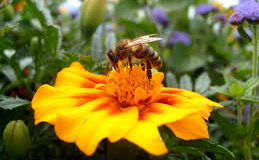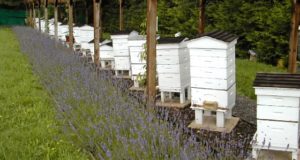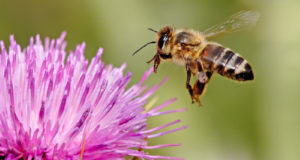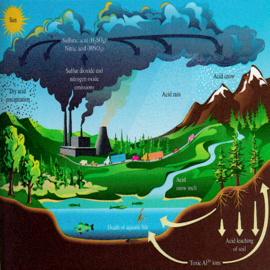
Tropical rainforests are found all across the world just below the Equator belt. Almost half of the remaining tropical rainforest is to be found in South America. One out of four ingredients in our medicine is from rainforest plants. 80% of flowers in the Australian rainforest cannot be found anywhere else. The rainforests of central Africa are home to more than 8,000 different species of plants. These amazing places cover only 6% of the world’s surface but they contain over half of the world’s animal and plant species.
A rainforest can be described as a tall, dense jungle. The reason it is called a “rain” forest is because of the high amount of rainfall it gets per year. The climate of a rain forest is very hot and humid so the animals and plants that exist there must learn to adapt to this climate.
Today tropical rainforests are disappearing from the face of the globe at a very quick rate. An area of a rainforest the size of a football field is being destroyed each second. Even though international concern is finally growing, rainforests continue to be destroyed faster than 80,000 acres a day. World rainforest cover now stands at around 2.5 million square miles, an area about the size of the United States of America or Australia and it represents around 6% of the world’s land surface. A lot of this area has been influenced by human activities and no longer has “full biodiversity”.
But why are the trees disappearing? They are being destroyed by human activities, both ignorantly and also sometimes purposefully. In the past 50 years much of the rainforest in Africa and Asia has been destroyed. Large areas of rainforest are being cut down, often in order to remove just a few logs, and rainforest is being destroyed at double the rate of all previous estimates. Unfortunately this means that there is a very high rate of extinction, as the wildlife depending on the forest dies with it.
One example of this is cattle ranching. Lots more people are beginning to eat beef in large quantities, so more cattle have to be bred to meet the demand. However, what many people do not realize is that cattle are one of the worst animals to breed. They create lots of methane in the atmosphere and they ruin the land after a few years by continually going over it with their heavy weights, puling up the grass by the roots when they eat.
In damp moist areas like the UK and northern Europe, this doesn’t matter. However, cattle ranching in hot tropical places like the Amazon rainforest, there are no trees to catch the rain when it falls onto the land where the cattle are being farmed. Why are there no trees? Because they have been cut away to make room for cattle and their ranchers.
Whenever it is not raining here, it is hot, and the wet mud dries and becomes hard and difficult. Even grass will no longer be able to grow in the soil. The soil is not protected and is being dissolved by rain so that it becomes just dirty brown puddles, and there is simply no way for new growth to occur, for the earth to renew itself. Eventually, in this manner, and many more besides there will be no forest left and no space to grow it back on.
Of course, I am talking of only one of many many reasons why the rainforest is disappearing. Some other examples include the burning of the forests, mining oil and natural gas, and logging.
The solution to this problem must be based on what is possible, and depends on developing a new conservation policy built on the principle of “sustainable use and development of rainforests”. Efforts to bring back ruined forests along with the launch of protected areas are crucial in securing rainforests for the long-term benefits they can provide us.
Charities like “Rainforest Concern” have specific projects to help the conservation and protection of rainforests. One of the projects that this particular charity has is called; “The Choco-Andean Corridor Project” in Ecuador. The objective is to create “habitat connectivity” to help species survival by linking the last unprotected forests between the Maquipucuna, Mindo y Pululahua reserves to the Cotacachi Cayapas Ecological Reserve and going north to the Awa Reserve in the province of Esmeraldas. They have been working on this project since 1993. That’s over 10 years!
What can we do to help? We can start by trying not to buy anything grown in rainforest regions, and to not buy furniture made from tropical wood, such as mahogany. However, staying in the UK, there isn’t a lot that we can do, other than helping to sponsor charities and giving donations to help them out.
Some people do not realise how important the Tropical Rainforest is to everyone on the planet. For a start, it helps to regulate our planet; turning our waste carbon dioxide into oxygen again for us to use. They absorb the carbon dioxide that we exhale, and provide the oxygen we need to breathe. When rainforest trees are burnt they release that carbon dioxide, which pollutes the atmosphere and contributes to global warming. Deforestation is in fact considered the second major driver of climate change, responsible for 18-25% of global annual carbon dioxide emissions!
They also act like a sponge for the world’s water, soaking it up from the soil and releasing it back into the atmosphere. In fact, it is commonly believed that the Amazonian rainforests alone store more than half of the planet’s rainwater! Without rainforests continually recycling huge quantities of water, feeding the rivers, lakes and irrigation systems, droughts would become more common, potentially leading to widespread famine and disease.
So, tropical rainforests are vital to our planet, and to us. They are even often nicknamed “The lungs of Mother Earth”. We have to do our best to help save them by supporting the charities who try everyday to keep the rainforests in check. We should also cut down on imports from rainforests and keep an eye on where our oil, food and furniture come from. Hopefully, one day, we can save the rainforests and, because of that, save the planet as well.

Source by J M Hart
 Vitamin Agent The Health & Naturalistic Source
Vitamin Agent The Health & Naturalistic Source





